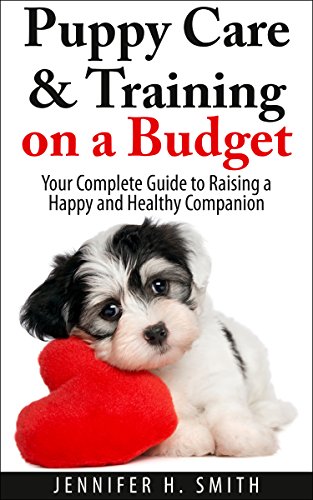
From a doberman to a golden retriever, members of the dog family possess traits that we all love. They can be playful and loving, great companions on a lonely night or for a walk on the beach.
However, in spite of all the positives about our canine friends, it is a known fact that even the smallest of dogs can inflict horrific injuries on a human.
These incidents are often labeled as attacks, however the majority of these are in fact defenses. It is important to understand the difference between the two.
Having come from Europe, I have been exposed to dogs for many years from the point of view of them being viewed mostly as pets, and while I knew that dogs bit people, I always saw it as a purely offensive act.
Then one day I was asked to do some desert consultancy work in the Middle East: namely in the barren mountainous region of Oman, where I had my first experiences with wild dogs.
Wadi-dogs as they are known in Oman, are mixed breed mountain dogs, some of whom very rarely mix with humans. However, I was told by my bedouin colleagues that this lack of interaction bears no significance on a dog's decision to attack, and that therefore a domesticated dog was just as likely to attack a human, as a dog who had never seen one before.
These mountain dogs travel in packs of about eight to ten and it was therefore vital that I learned their behavioral traits, as if one attacks, they all will. According to my colleagues, an assault from a pack of wadi-dogs would be unsurvivable for me, and thus began my lessons in dealing with that.
Firstly, as I said earlier, the majority of dog attacks are defensive. Dogs only usually attack if they are hunting. Any other attack will normally be of a defensive nature. Either way, a bite is a bite.
A dog will attack you for any number of reasons, but let's narrow it down to a few essentials:
Stumbling onto a mother and her pups:
This is probably the fastest way to get bitten. A mother with pups is usually tired, hungry and majorly on the defensive. Maternal aggression can be severe.
Scaring a dog:
Surprising a dog with a loud noise or an unexpected approach may result in a snapping reaction, especially if the dog is not used to people. Known as fear aggression, this can result in getting bitten.
Getting between a dog and food:
Dogs do not reason the way humans do. If you get in the way of food then you are competition. This can result in a particularly ferocious attack.
Annoying a dog:
A child can usually become victim to getting a bite from a dog that has simply had enough of being tormented. Some adults also never seem to learn, wondering why they have twenty stitches after driving a dog to distraction for an hour.
Approaching an injured dog:
Again you have to be careful here. Dogs cannot rationalize that help is being administered. An injured dog is vulnerable and therefore defensive. Couple being scared with the pain from an injury and you have a recipe for an assault.

What To Do If In Danger:
There may come a time when you are face to face with a dog who is ready to bite you. When this happens there are a number of things to look for.
If the dog is standing away from you and barking, or is barking, stepping forward and then retreating, it is warning you that you're already way too close for comfort and there are a number of things that you need to do now.
The solution in this case is to slowly step away from the dog.
If A Dog Approaches You:
Basically, dogs only have three methods of approach which you should know about.
If it comes towards you with it's head bowed, it is being submissive and while you should think twice about touching a dog that you do not know, there is no real danger from a dog at this point.
A dog with it's head raised in the air, is more confident but again is not being aggressive, as it is exposing it's neck and chest to you. A sign that it does not feel threatened by you.
If a dog comes at you at a pace, with it's head level with it's back, you are in imminent danger of being bitten. At this stage, the dog has more or less made a decision to attack you, and therefore you have to deal with that.
What To Do If Attacked:
In a situation where a dog has opted to go for a bite, then you have to minimize the damage from the attack. As we have already learned, running is a bad idea and therefore you should stand your ground. It is now a battle of wits. If you lose, you could die so it is important to lay out the order of things.
Stand firm and stare directly at the dog. Bear your teeth and shout as loud as you can, while waving your arms and making yourself as big as possible.
If the dog jumps up at you, get down on the ground and roll into a ball. Protect your head and eyes with your arms and try to stay in a position where your knees are on the ground, with your back exposed. The objective is to keep your core protected.
However, if the dog chooses to attack by biting your arm, do not drag away from the bite. Instead, push in towards the dog, as this will ensure only a puncture wound and not ripped flesh.
A dog that feels it has lost control of a bite will think twice about biting again, especially if you follow up with more shouting and a kick.
Remember that kicking and counter-attacking a dog is only to be done once an attack has been instigated. You can usually defuse an attack by following the initial instructions in this article, however, if the dog has decided to go to war then you have to fight back. Dominance must be established as the alternative is many bites and the potential for major blood loss or even death.
Above all, even when undergoing a full assault from a dog: remain calm. Think and then act.
 6 Things Your Dog Needs You to Know About Glaucoma in Dogs
We think of Glaucoma as a pe
6 Things Your Dog Needs You to Know About Glaucoma in Dogs
We think of Glaucoma as a pe
 Four Helpful Truths About Blindness in Dogs
If youre reading this theres
Four Helpful Truths About Blindness in Dogs
If youre reading this theres
 How to have a Well Behaved Dog and Save Money at the Same Time
My partner was fixated on getting a pet dog, and cost w
How to have a Well Behaved Dog and Save Money at the Same Time
My partner was fixated on getting a pet dog, and cost w
 Pet Health Part 1
PlantLooks like a Cactus
Credit: Wiki
Pet Health Part 1
PlantLooks like a Cactus
Credit: Wiki
 Best Dog Breeds For Children
The best way to have a family friendly dog is to love i
Best Dog Breeds For Children
The best way to have a family friendly dog is to love i
Copyright © 2005-2016 Pet Information All Rights Reserved
Contact us: www162date@outlook.com